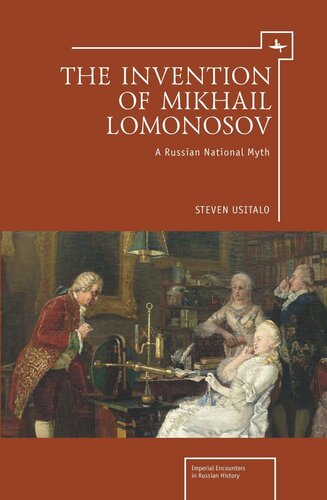

Most ebook files are in PDF format, so you can easily read them using various software such as Foxit Reader or directly on the Google Chrome browser.
Some ebook files are released by publishers in other formats such as .awz, .mobi, .epub, .fb2, etc. You may need to install specific software to read these formats on mobile/PC, such as Calibre.
Please read the tutorial at this link: https://ebookbell.com/faq
We offer FREE conversion to the popular formats you request; however, this may take some time. Therefore, right after payment, please email us, and we will try to provide the service as quickly as possible.
For some exceptional file formats or broken links (if any), please refrain from opening any disputes. Instead, email us first, and we will try to assist within a maximum of 6 hours.
EbookBell Team

5.0
78 reviewsThis study explores the evolution of Lomonosov’s imposing stature in Russian thought from the middle of the eighteenth century to the closing years of the Soviet period. It reveals much about the intersection in Russian culture of attitudes towards the meaning and significance of science, as well as about the rise of a Russian national identity, of which Lomonosov became an outstanding symbol. Idealized depictions of Lomonosov were employed by Russian scientists, historians, and poets, among others, in efforts to affirm to their countrymen and to the state the pragmatic advantages of science to a modernizing nation. In setting forth this assumption, Usitalo notes that no sharply drawn division can be upheld between the utilization of the myth of Lomonosov during the Soviet period of Russian history and that which characterized earlier views. The main elements that formed the mythology were laid down in the eighteenth and nineteenth centuries; Soviet scholars simply added more exaggerated layers to existing representations.